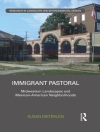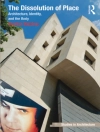In ‘The Stones of Venice, ‘ John Ruskin embarks on a profound exploration of the architectural grandeur and aesthetic philosophies embedded within the gothic structures of Venice. Through meticulous descriptions and detailed analyses, Ruskin crafts a rich narrative that marries art and moral philosophy, arguing for a deeper appreciation of craftsmanship and the intrinsic value of beauty in society. His literary style is characterized by lyrical prose interwoven with historical references and socio-political critique, situating the work within the broader Victorian discourse on industrialization and its impact on artistry and culture. John Ruskin (1819-1900) was a leading art critic, social thinker, and advocate for the Arts and Crafts movement, influenced by his formative years steeped in the beauty of nature and architecture. His extensive travels across Europe and his deep convictions about the decline of moral integrity in art fueled his desire to engage with and preserve the artistic heritage of the past, particularly in the face of rapid industrialization. This background inspired him to examine Venice, a city emblematic of artistic richness and cultural decay. ‘The Stones of Venice’ is a must-read for anyone interested in art history, architecture, or the interplay between ethics and aesthetics. Ruskin’s insights resonate powerfully today, inviting readers to reconsider the significance of beauty in our increasingly mechanized world, making it a timeless and essential work.
关于作者
John Ruskin (1819–1900) was one of the most versatile and influential thinkers of the 19th century. A polymath who had significant impact across a multitude of disciplines, Ruskin was an art critic, the patron of various artists, a draughtsman, a watercolourist, a prominent social thinker and a philanthropist. Born in London into a wealthy family, he was educated at the University of Oxford where he won the Newdigate prize for poetry, an early indicator of his literary talents. Ruskin’s writings were vast and varied, but they consistently fused his interests in art, nature, and morality. His five-volume work, ‘The Stones of Venice’ (1851–53), is illustrative of his approach — blending architectural analysis with a call for moral and societal reform based on the lessons of Venetian art history. This seminal text not only impacted the gothic revival in architecture but also fortified his reputation as a brilliant and penetrating art critic. In it, Ruskin espoused the belief that artistic and social health were deeply interconnected, and from there, he expounded on themes that would recur throughout his writing: the importance of craftsmanship, the moral significance of beauty, and the detrimental effects of industrialization on both society and the environment. Ruskin’s literary style was notably rich and ornate, reflecting his passion for beauty and precision, and making him a towering figure of the Victorian era, whose work continues to influence and inspire.












